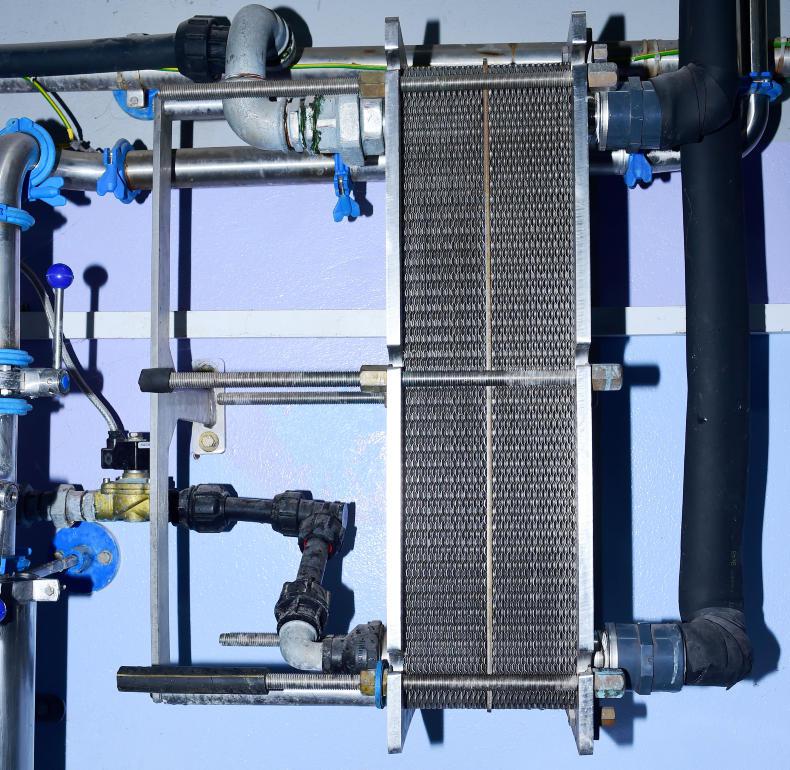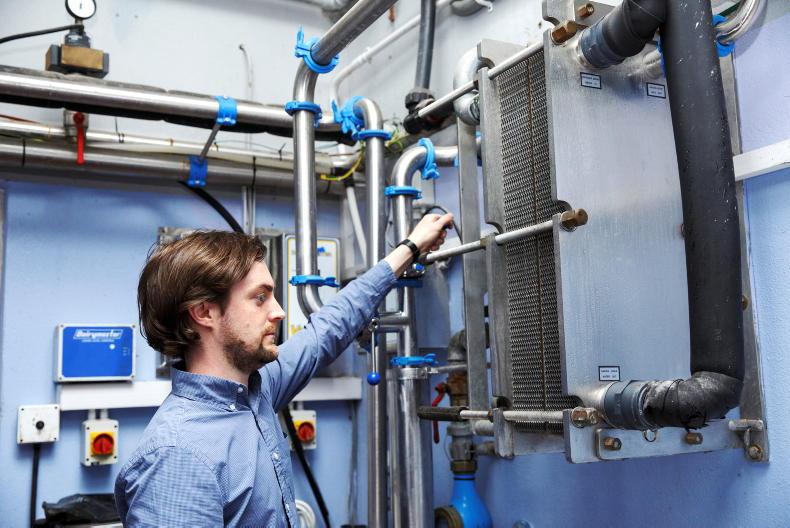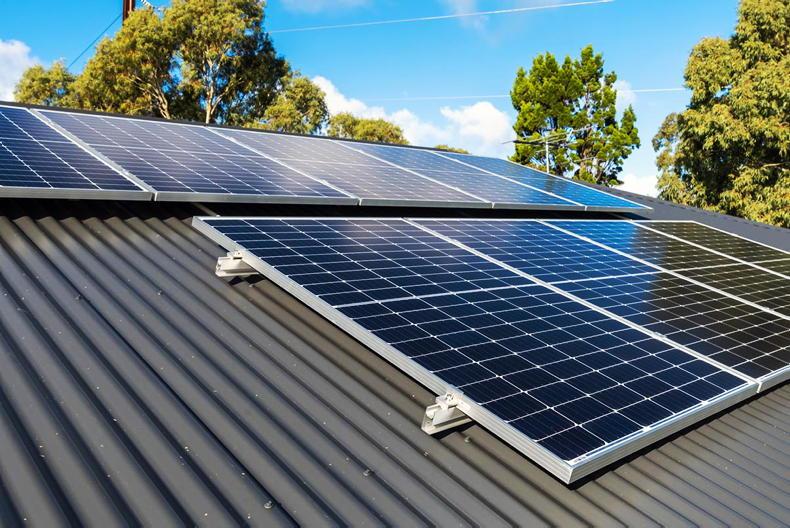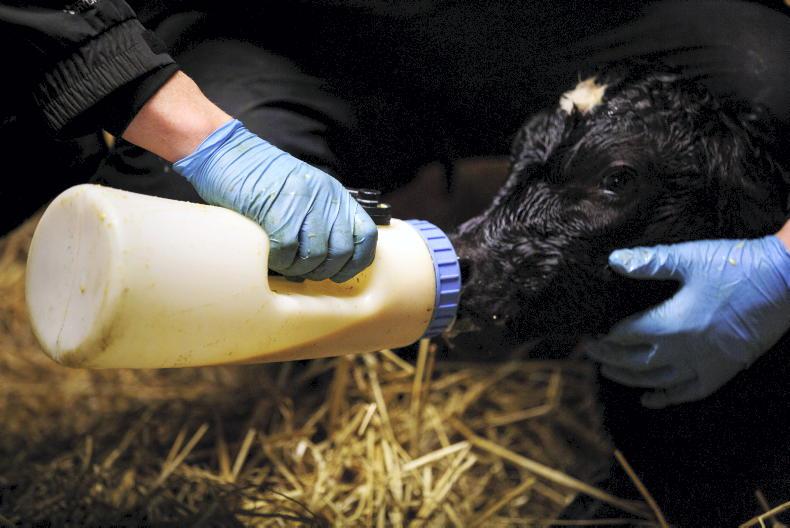Energy costs on Irish dairy farms can be quite substantial. Fortunately, there are a number of changes farmers can make in order to reduce costs on their farm.
Teagasc has a number of energy cost-saving ideas for dairy farmers. Before looking inside the farm gate to make savings, it is important that farmers shop around for the best electricity rates. “Bonkers.ie will show the difference in price between different suppliers and it makes it easier for farmers to compare tariffs,” Michael Breen explains.
“Prior to making any changes to your farm in terms of energy usage, it is important to first check how your farm’s electricity costs compare with the average costs on conventional dairy farms,” says Michael.
The average costs are €5 per 1,000 litres of milk sold. He said this figure ranges from €2.60 to €8.70 per 1,000l of milk sold. “If your farm is at the lower end of this scale, there is probably not an awful lot you can do to reduce your energy costs,” says Michael. However, if it is on the higher end of the scale, there are a number of options available to reduce energy costs, according to Michael.
Milk cooling, water heating and the milking machine are the top three energy consumers on dairy farms. They make up approximately 75% of the farm’s energy usage and therefore offer the most potential to reduce energy costs. There is a very useful online Dairy Energy Decision Support Tool, funded by the Sustainable Energy Authority of Ireland (SEAI) and developed by Cork IT and Teagasc. This tool will let the user know if certain energy-saving technologies will be worthwhile on their individual farm, and if there will be a return on investment. The tool is free to use and is available at http://messo.cit.ie/dairy.
Milk cooling
Milk cooling makes up 31% of on-farm energy costs. The main way to reduce energy costs for milk cooling would be to install a plate cooler. “Teagasc research shows that installation of a plate cooler will pay for itself within five years,” he explains.
Michael warns that just because a plate cooling system is installed, it does not mean it is working efficiently. “An efficient plate cooling system should have a 2:1 water to milk ratio. This means that for every litre of milk flowing through the plate cooler, you need two litres of water flowing through at the same time.
‘‘One way to check if this ratio is correct is to measure the temperature of the cold water entering the plate cooler, and the temperature of the milk exiting the plate cooler, before it enters the milk tank. The difference in these temperatures is a very good indicator of the water to milk ratio. If the temperature difference is approximately 5°C, it is a sign that ratio is correct,” says Michael.
Using a variable speed drive (VSD) milk pump is an important aspect in achieving the correct water to milk ratio. These pumps speed up or slow down depending on the amount of milk entering the milk receiver jar.
“A VSD milk pump ensures that there is a more even flow of milk through the plate cooler which increases the ability of the water to cool down the milk in the plate cooler. The SEAI has launched an energy-efficiency grant for the dairy sector, which provides a grant of 40% on the cost of retrofitting a VSD milk pump to an existing milking machine. Application forms can be accessed via the SEAI website,” explains Michael.
In terms of the milk cooling tank itself, there are two main types available, direct expansion and ice bank. “According to our research, if you were to install a new milk cooling system in the morning, in terms of profitability the best one to install would be a direct expansion system with plate cooling,” Michael says.
Water heating
Water heating accounts for 23% of on-farm energy costs. There are three main systems that farmers use: electric heating elements, oil or gas heating.
“Teagasc research shows that electric heating systems are the best blend of running costs and investment cost for most farmers,” says Michael.
“The electric water heating should start at midnight using a timer. Night-rate hours run from midnight to 9am in summer time, with night-rate electricity costing about half as much as day-rate electricity per unit,” he explains.
Michael says that some farmers prefer gas because it provides instant hot water with lower running costs than electricity, but when the capital costs are considered, water demand would need to exceed 500 litres per day in order to deliver a positive return on investment.
Milking machine
John Upton says the vacuum pumps of the milking machine account for 20% of the farm’s total electricity consumption. “There is a technology available called a variable speed drive (VSD), which can be applied to the vacuum pumps and is proven to dramatically reduce the electricity consumption of these vacuum pumps by over 60%,” he explains.
John says that in addition to the financial benefits realised due to reducing electricity consumption, the VSD technology also reduces the noise generated by these pumps which makes the dairy a much quieter place to work.
Finally, the wear and tear and oil consumption of the pumps is reduced since they will be running at a reduced speed during milking, according to John.
“During milking, the milking machine’s air consumption is a fraction of the vacuum pump capacity resulting in large amounts of air being drawn in through the regulator. Since the vacuum pump motors only operate at full speed in a regular installation, addition of a VSD to the vacuum pumps of these large modern milking machines can result in savings of over 10% on total farm energy costs,” he said.
The VSD is able to adjust the rate of air removal from the milking system by changing the speed of the vacuum pump motor to equal the rate at which air is admitted to the system at a given vacuum level.
All of the energy used to move air through the conventional vacuum regulator is saved.
A sensor is added to the main airline to measure the vacuum in the milking machine and the VSD controls the speed of the motor to maintain the desired vacuum level, John says.
The SEAI energy efficiency grant for the dairy sector provides a grant of 40% on the retrofitting of VSDs to vacuum pumps. The scheme will refund up to €5,000 of the cost of the technology on single-phase pumps and €3,000 for three-phase pumps. For single-phase farms, the payback varies from eight years for a 16-unit milking machine, to seven years for a 24-unit milking machine whereas the payback would be less than five years for most three-phase milking machines over 16 units.










SHARING OPTIONS